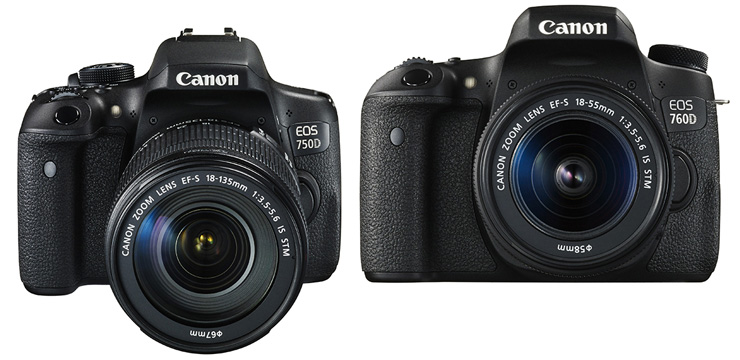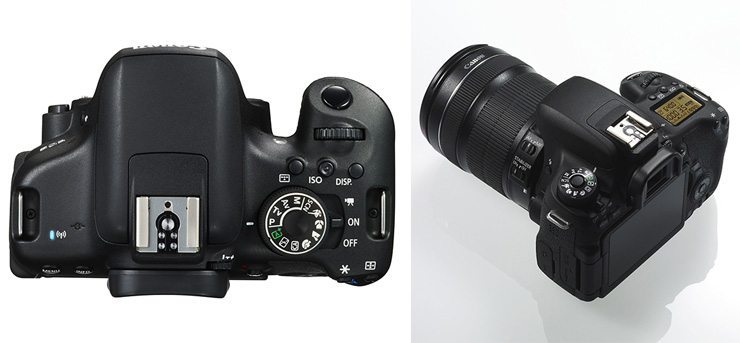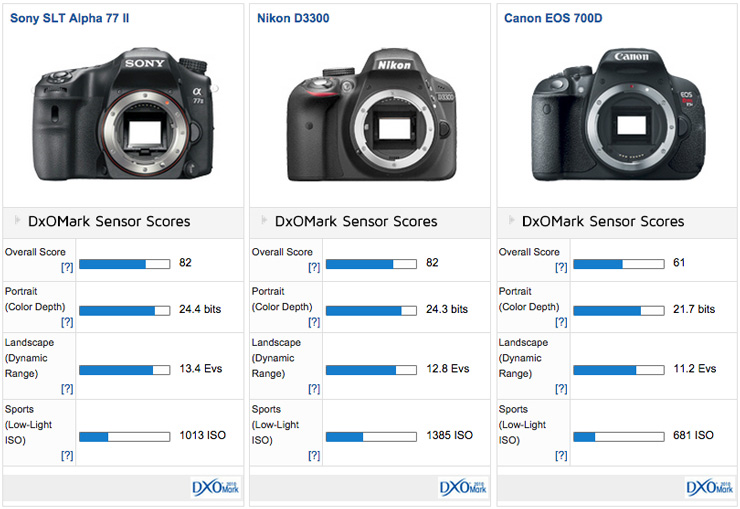Canon 750D & 760D Specifications: Same features, different shells
The recently-released Canon EOS 750D and EOS 760D become the new flagship models in the Canon entry-level lineup of DSLRs. With both models packing a new APS-C 24.2Mp CMOS sensor, the 750D and 760D offer a significant increase in resolution compared to their predecessor, the 18Mp EOS 700D. As we’ve seen with the recent semi-pro 50.6Mp 5DS announcements, Canon in 2015 is firmly back in the megapixel race and the new 750D/760D models will give it parity with some of the competition, such as the 24Mp Nikon D3300/D5500 DSLRs, and the 24Mp Sony SLT A77 II and 24Mp Sony hybrid A5100/A6000 models.
In terms of features and specifications, both the 750D and 760D are the same, but where they differ is in the design and controls of the camera body. Aimed more towards photographers taking their first steps up to DSLR from shooting with a compact or camera phone, the exterior of the 750D is a little simpler than the 760D, which boasts a couple of controls often seen on semi-pro DSLRs. These include a top-plate LCD screen for checking and changing some settings, as well as a control wheel on the rear for quicker menu navigation or scrolling through images, both of which will be appreciated by the more experienced DSLR photographer at whom the 760D is aimed.
In terms of the tech specs, both models feature a 3.2in, 1040k-dot, vari-angle LCD touch-screen and an ISO 100-12,800 sensitivity range (expandable to ISO 25,600) for stills or ISO 100-6,400 (expandable to ISO 12,800) for video. To handle the data from those extra pixels, the 750D and 760D comes equipped with Canon’s latest DIGIC 6 image processing engine found on their semi-pro 5DS model, and just like their bigger brother, the 750D and 760D cameras also offer continuous shooting at 5 fps.
For autofocus, there’s a hybrid AF system that includes 19 cross-type phase detection sensors for still photographers, and Canon’s hybrid CMOS AF III Contrast Detect autofocus with track and swap focus controls for videographers,. For those serious about shooting movies, the 750D and 760D offer full HD 1080p capture at 30/25/24 fps, as well as 720p at 30/50/60fps, and compatibility with Canon’s range of STM “stepper” lenses for near-silent autofocus performance during video capture. In addition, both models feature a built-in microphone input socket for recording higher-quality sound, output to the convenient MP4 video format, and a HDR movie mode.
The optical viewfinder offers 95% frame coverage and is “Intelligent,” according to Canon, which means it utilizes a transparent screen to overlay both shooting information and an electronic spirit level to help you keep your horizons straight. Both models come equipped with built-in wi-fi and NFC connectivity to make sharing images easier, and the Canon EF/EF-S lens mount ensures compatibility with Canon’s full range of lenses to open up a world full of creative possibilities.
The Canon EOS 750D and 760D will be available from April 2015 onward, with expected price of $849 for the 760D and $749 for the 750D (body only).
Canon 750D & 760D Specifications: Bigger resolution, better DxOMark scores?
With Canon languishing down in the rankings in terms of its DxOMark Sensor Scores, it has to be hoping that its latest crop of higher-resolution sensors will rate a little better. For APS-C sensors, even though the latest 24Mp offerings from Nikon and Sony have surpassed the 80-point barrier, the highest-scoring Canon APS-C model is the 70D with only 68 points. That equates to a whole stop better image quality from the Nikon and Sony models overall, and in fact these scores are slightly better than results from Canon full-frame sensors, such as the EOS 6D. These top-level overall DxOMark Sensor Scores represent the results for optimum sensor performance, however, which is usually the base ISO rather than the ISO setting you’d use on every shot. A more holistic analysis of sensor performance requires charts identifying scores at different ISO settings. In the case of Canon’s 700D against the Sony A77 II and the Nikon D3300, although at base ISO the Nikon/Sony models offer around 2 stops’ improvement for Dynamic Range and Color Depth, the scores start to narrow as sensitivity is increased. That said, the 700D is still behind both the Nikon and Sony throughout the sensitivity range and Canon enthusiasts will have to hope the new 24.2Mp sensor in the 750/760D can start to close the gap on its rivals. We’ll bring you a full test and review of the new Canon EOS 750D and EOS 760D in the very near future.








DXOMARK encourages its readers to share comments on the articles. To read or post comments, Disqus cookies are required. Change your Cookies Preferences and read more about our Comment Policy.